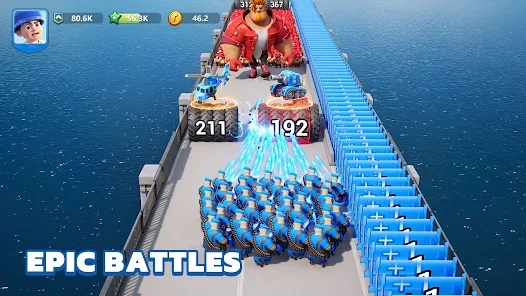Why Casual Games are Redefining the Landscape of Real-Time Strategy Games
Casual games have quietly crept into our lives, redefining the gaming landscape in ways that seasoned players might not even notice. They were once viewed as a simple distraction, but these games are bringing new dynamics to traditional categories like real-time strategy (RTS) games. In this article, we explore the intersection of casual gaming and RTS, examining how this transformation is reshaping the gaming experience.
Understanding Casual Games
Casual games are designed to be easily accessible, requiring little time commitment and offering straightforward gameplay. They appeal to a broad audience, not just hardcore gamers. Think of popular titles like Candy Crush or Angry Birds; they allow players to jump in and out without any steep learning curve. The appeal lies in their simplicity and engaging mechanics, making them perfect for quick gaming sessions.
The Evolution of Real-Time Strategy Games
Real-time strategy games have a rich history, known for their complex mechanics and competitive gameplay. Titles like StarCraft and Age of Empires have set the stage for intricate strategies. However, RTS games also require considerable time and dedication, often deterring casual gamers who might feel overwhelmed. This is where casual games come into play, introducing a new level of accessibility.
Why Casual Games are Crucial for RTS
- Wider Audience Reach: Casual games appeal to a broader demographic, attracting those who may not typically play RTS.
- Simplification of Mechanics: Casual games help in streamlining gameplay, reducing the complexity seen in traditional RTS titles.
- Increased Engagement: Casual, bite-sized gameplay encourages longer play sessions, as players can easily engage at their convenience.
The Blending of Genres
The integration of casual elements into RTS games is increasingly common. This evolution results in hybrid games that maintain strategic depth while embracing features that casual players enjoy. For instance, incorporating base-building mechanics from casual games can enhance user engagement while keeping the core tactical elements intact.
Examples of Successful Hybrid Games
| Game Title | Release Year | Casual Features |
|---|---|---|
| Clash of Clans | 2012 | Short strategic battles, base building |
| Plants vs. Zombies | 2009 | Simple mechanics, humor, and strategy |
| Empire: Four Kingdoms | 2014 | Resource management, casual PvP |
Integrating Best Story Games Into Casual RTS
As we delve deeper into this genre hybrid, it’s hard not to notice how narrative can weave its way through casual RTS elements. Best story games, like those seen in 2018, show that storytelling doesn’t only belong to RPGs. It adds emotional weight, making casual RTS experiences more immersive.
The Role of Social Features
Social interactions found in casual games enhance the competitive environment that RTS thrives on. Features like clans and cooperative challenges pull players into a community, encouraging them to engage with the game and each other, thus enriching the overall experience. Casual games have pioneered these social mechanics, bringing them into the RTS genre.
Challenges in This Transformation
However, melding casual games with RTS isn't without its hurdles. Some hardcore RTS players worry that simplifying mechanics could detract from strategic depth. Balancing between accessibility and depth is crucial for developers aiming to keep both player demographics satisfied.
Key Features of Successful Casual RTS Games
- Engaging tutorials
- Simple control schemes
- Fast-paced sessions
- Dynamic updates and seasonal events
- Smooth graphics and UI
Player Feedback and Community Engagement
Listening to players is essential. Developers who pay attention to feedback can refine their games over time, ensuring that they meet the expectations of both casual and hardcore gamers alike. Regular updates and community events can foster loyalty and enthusiasm which are vital in 2023's competitive gaming industry.
The Future of RTS in a Casual Game World
Looking ahead, the landscape of RTS games will likely continue to evolve, adopting more features from casual gaming. This ongoing fusion promises a future where players can enjoy strategic depth in an approachable format. As technology advances with AR and VR, the potential for this genre integration is endless.
Conclusion
In all these explorations, it's clear that casual games are redefining the landscape of real-time strategy games. By simplifying complex mechanics, introducing social features, and enhancing narrative depth, we are witnessing a new era of gaming that appeals to a wider demographic. The boundaries of conventional gaming are melting away, paving the way for innovations that we have yet to imagine. Whether you're a hardcore RTS strategist or a casual gamer, this transformation is something to look out for, as it promises to reshape the overall gaming experience positively.



